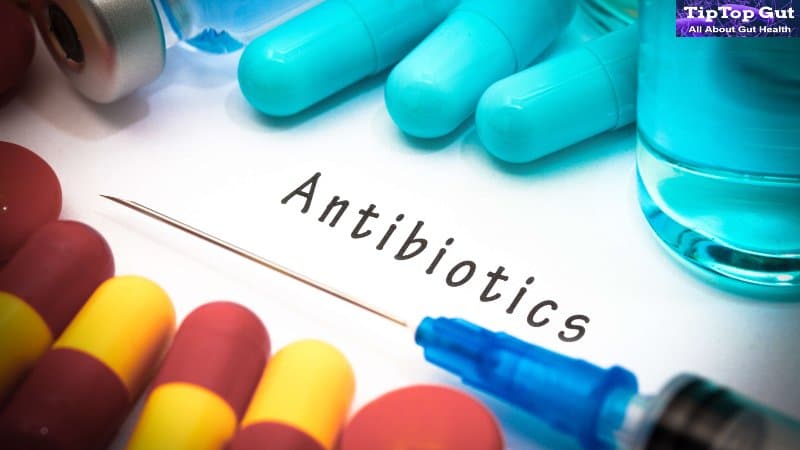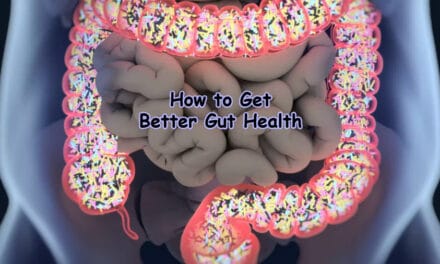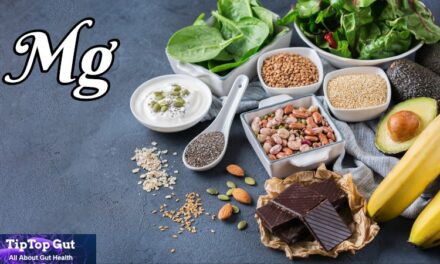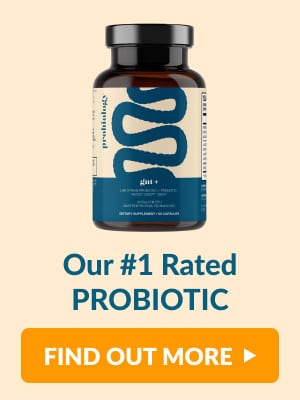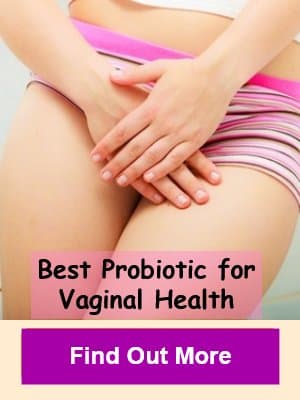Sometimes antibiotics become necessary because your doctor prescribe it for any infection you have caught up. But you can’t imagine how much health porbiotics you have to lose to cure from the nasty infections. Then the question arises how to restore gut health after antibiotics.
Here’s what you should be aware of to improve your gut’s health, support your naturally healthy flora and select the best supplement for gut health following antibiotics.
Being healthy may seem impossible, especially since our bodies are complicated and mysterious. However, many don’t realize that there are easy methods that are specific and well-studied that can improve the health of your body, for example, and the majority involve the digestive system.
The reason is that your body depends on healthy bacteria to regulate your digestive tract, boost the immune system, produce serotonin, and many others. Instead of figuring out the best way to rid yourself of harmful gut bacteria, you’ll find that restoring gut flora and fixing the good bacteria is more crucial.
How to Restore Gut Health after Antibiotics?
We know that a healthy microbiome focuses on diversity, and antibiotics certainly aren’t helping this. It is possible to take control of your digestive health and find methods to increase the diversity of your microbiome.
Following are some of the research-based ways to to restore gut health after antibiotics.
1. Use probiotics
The scientific evidence supporting the advantages of taking probiotics before and following antibiotic treatment is unclear.
Some studies found that taking probiotics can decrease the risk of invasion by opportunistic pathogens and antibiotic-associated diarrhea. However, different probiotic strains can likely have other effects on different individuals.
Certain probiotics can withstand stomach acid and enter the gut, forming an effective barrier against harmful bacteria. Culturelle can be an instance.
The ideal time to take probiotics when taking antibiotics is at least 3 hours from one another. Probiotics have the most excellent chance of survival.
Saccharomyces boulardii is an effective yeast that can aid in stopping the spreading of Candida (an unintentional yeast) following an injection of antibiotics. Candida is usually present in tiny quantities in most people, but it can become a problem and cause issues in the event. Saccharomyces Boulardii is also identified to help preserve and rebuild a digestive barrier.
Incredibly, a small study has found that probiotics can hinder the development of the natural microbiota of the gut. The gut microbiome that was initially present in people who took probiotics for 28 days after taking antibiotics returned slower than in those who didn’t consume probiotics. You can read more about the Best Over the Counter Probiotic for Gut Health: An Ultimate Guide 2022!
2. Maximize the benefits of prebiotics
Another method to restore your gut flora after antibiotics is to ensure you feed your micro-organisms properly; by eating foods, the gut bugs are fond of. This is when you eat foods with the highest levels of prebiotics.
Prebiotics provide food for the bacteria in our large intestines since they aren’t digested further into our small intestinal tracts. Foods that are prebiotics are generally packed with fiber and polyphenols. Therefore, eat many fruits, vegetables, legumes, nuts, and whole grains.
It is also possible to try prebiotic supplements such as inulin, a plant sugar discovered to decrease the diversity-destroying effects of ampicillin in bacterial strains. You may also read about the 60 Best Foods for Gut Health and Digestion: The Best Guide You Ever Need!
3. Eat like a hunter-gatherer
A varied, fiber-rich diet is your best choice to boost the diversity antibiotics could bring about.
In a recent study, an array of Italian researchers looked at the intestinal microbes of children villagers in Burkina Faso, Africa, and those of children living in Florence, Italy. The Burkina Faso villagers, who consumed millet predominantly, the sorghum (whole grains), had a higher microbiome diversity than Italians who ate an average Western diet. The bugs found in the Italian kids’ digestive tracts were adjusted to proteins, fats, and simple sugars, and their Burkina Faso microbiome favored fiber.
A researcher in this Burkina Faso study wanted to learn more about the role played by fiber in our microbiomes. So they were able to lead another research project that fed one set of mice plenty of fiber and another with a sugary Western diet. The mice fed fiber had an enumerated microbiome; the diversity was lower in those fed a Western-style diet. In addition, they reported that mice fed fiber were more savage and challenging to manage!
4. Reduce stress
Research has shown the stress response triggers a “fight-or-flight” response that releases hormones across various areas of your body, which affects the microbiome of your body, decreasing the diversity of your microbiome. To make matters worse, an altered gut microbial population influences neurotransmitters’ regulation, which can increase stress.
5. Exercise
Exercise can alter the composition of your microbiome. One study showed that exercising could enhance diversity in your microbiome. It also improves the balance of particular kinds of bacteria, which may help reduce the weight of your body.
Furthermore, research has found that exercise can increase the number of bacteria that will improve the quality of the gut barrier and protect you from gastrointestinal problems or colon cancer.
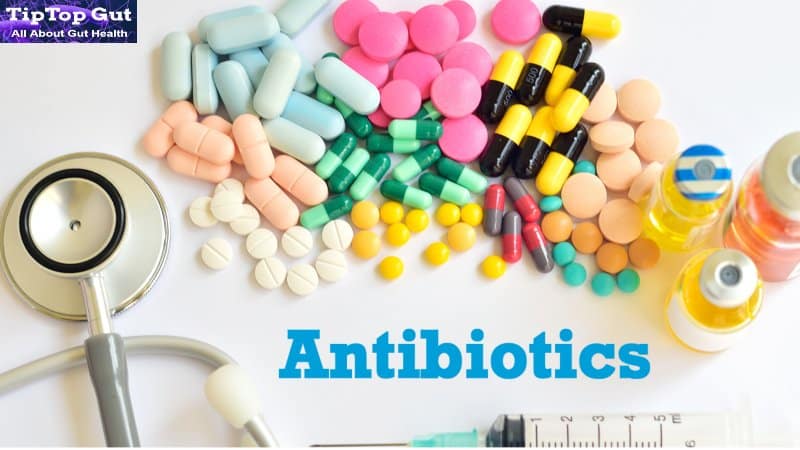
What Are the Most Effective Probiotics for Reducing Antibacterial Side Effects?
Probiotics counteract the adverse effects of antibiotics on good gut bacteria.
Typically, it takes the body time to restore the microbiome and healthy levels of diverse, healthy bacteria. Research has proven that it can take about six months to heal from the harm caused by antibiotics. Even then, the body may not even be in the pre-antibiotic condition.
Saccharomyces boulardii, a probiotic yeast, is particularly good at preventing and alleviating antibiotic-associated and traveler’s diarrhea. It’s also a good friend for gut bacteria, which supports healthy bacteria and reduces inflammation.
What Are Gut Microbiome?
The gut microbiome is located within your large intestine and is home to the most diverse of bacteria within the entire body. It’s because, unlike other organs, the digestion tract functions as an open-air ecosystem that is more open to the external environment than any other area of your body.
What is this all about? The gut microbiome is shaped by factors such as the gender of the person, their age, geographical and socio-economic circumstances, diet, and health issues. Each person’s gut microbiome may be different and affected by various elements.
Read More:
What Do Tomatoes Do to Your Gut? Cool Facts Revealed by Science 2022
How Much Harm Can Antibiotics Give to Your Gut?
There are approximately 100 trillion microbes in our guts. Therefore, it’s impossible to pinpoint the exact makeup of any microbiome before they begin their course of antibiotics or when they have finished. But, modern testing of our guts can give us an idea.
The results of the research have revealed that antibiotics can be used to destroy gut bacteria. This means that the antibiotic you received to treat your sinus infection may have cut your gut bacteria to one-tenth of its former level. This is not one-tenth of a tenth. Up to one-tenth: this is a 90% reduction.
The amount of damage caused by antibiotics is based on the following factors.
1. Length and the Number of Courses
Multiple courses of antibiotics are believed to be the most harmful. Higher antibiotics over a longer time will have the most significant impact. This may be shocking to those who–most often in their teens, took antibiotics for weeks or months to cure their acne.
2. The Kind of Antibiotic
If you visit your doctor for any infection, you’ll likely receive an antibiotic with a broad spectrum. This is because unless your doctor takes a sample of your blood and sends it to a laboratory to be examined, they will not know what kind of bacteria is responsible for the infection. Prescribing an antibiotic with a broad spectrum makes the drug more likely to act against your infection. However, the bacteria in your gut will suffer more of a hit.
When researchers treated mice with either a broad-spectrum antibiotic called cephalosporin or a combination with three antibacterial agents (amoxicillin bismuth, metronidazole, and bismuth), Both treatments led to significant changes in the gut the microbial community.
The mice given the broad-spectrum antibiotic didn’t recover their average diversity. Still, the other mice were given the amoxicillin-containing combination mostly–but not wholly–returned to pre-treatment levels.
3. At What Stage of Life Do You Take Antibiotics?
Our early years appear to be the most crucial time for developing an ideal microbiome that is healthy for the rest of our lives. A study has found a link between antibiotics administered during early life and cognitive problems, including ADHD, depression, anxiety, and ADHD. And others have discovered that the higher number of courses of antibiotics one receives in childhood, the higher chances of developing juvenile rheumatoid and IBD.
Others have linked the exposure to antibiotics in the womb as well as the early years of childhood (and the subsequent change in intestinal microbial composition) to the growth and progression of asthma into later the course of life and obesity in children and as adults.
Why Is It Essential to Restore Gut Health after Antibiotics?
In the healthy and diverse gut microbiome living microbes protect you from invading pathogens that could cause illness or cause. They cooperate, employing various methods to ward off pathogens like:
- Producing Antimicrobial substances which fight harmful bacteria away
- Blocking pathogens from entering and stopping them from having “real estate” within the stomach
- Maintaining the Mucus Layer that lines the intestines ensures that pathogens don’t get into intestinal cells and establish a home.
- training of the immunity system to recognize pathogens
- Producing Antimicrobial substances which fight harmful bacteria away
- Blocking pathogens from entering and stopping them from having “real estate” within the stomach
- Maintaining the Mucus Layer that lines the intestines ensures that pathogens don’t get into intestinal cells and establish a home.
- Training of the immunity system to recognize pathogens
If antibiotics diminish the microorganisms in the gut, these protective functions could cease. Then pathogenic bacteria could be introduced and disturb the balance.
Good Bacteria and Gut Health
But, we’ve been told for a long period of time that every single bacteria is bad. If you’re wondering, “Is flora good for you?” Now, you’re pondering whether it’s a good thing, and if it’s a good thing, then you’re. However, don’t worry because this myth is untrue. We know that bacteria are highly secure, some significant, but only a tiny percentage can be hazardous.
When you are born and in the infant stage, they help build the immune system. In adulthood, they create essential substances that help keep your gut lining healthy and help fight against microbes that can cause illness.
To keep your gut healthy and happy, the answer is the diversity of microbial life. In general, many different kinds of microbes must live in harmony. If there isn’t this, it can lead to dysbiosis, where there’s not enough diversity, and some bacteria could expand over the top.
The microbiome becomes unhappy if an imbalance between harmful and good bacteria occurs. This has implications for digestion, inflammation in the gut lining, and the brain’s health and mood.
Gut Bacteria and Immunity Health
In the end, a overtake of harmful bacteria can drastically impact immunity and allow disease, infection, and chronic diseases to grow. The gut is the initial link between the exterior environment and our immune system. Both work together to regulate the body’s response to pathogens that cause harm.
Brimming with healthy bacteria, a gut microbiome will inform cells within the immune system that all “foreign” microorganisms are harmful and must be destroyed. However, when the gut microbiome is not functioning correctly, it cannot effectively interact with immune cells. This causes your body to attack its healthy cells.
When the immune system and the gut work together, the gut and immune system run well. This helps to increase the number of beneficial bacteria that enhances gut health and immunity. This triggers stronger reactions to pathogens and makes the body more at ease with your naturally occurring gut bacteria.
Frequently Asked Questions
How do antibiotics damage your gut health?
Gut health can be restored by knowing the bacteria that reside in your GI tract.
Antibiotics are prescribed for nearly half of the UK population each year for normal ailments and within hospitals to manage or prevent serious infections. These are the most frequently used uses for antibiotics:
- Ear infections
- Sinus infections
- Chest infections
- Throat infections
- The urinary tract and bladder, kidney, and infections in the urinary tract, bladder, and kidney
- Skin and wound infections
- Pneumonia
However, antibiotics aren’t just aimed at harmful bacteria and aren’t able to treat viral illnesses, which are typically impossible to differentiate from bacteria-related ones. However, they destroy good bacteria also, which is harmful because good bacteria are typically helping the body fight off the illness.
Some people also experience moderate to severe side effects of antibiotics, especially those whose immune health has been compromised, as with people in hospitals. Additionally, antibiotics could allow for the growth of highly harmful bacteria like E.coli, C.diff, and Salmonella and infections that can be severe enough to warrant hospitalization.
What are the common side effects of antibiotics?
Following are some of the side effects of antibiotics:
- Diarrhoea
- Yeast infections
- Gas
- Vomiting
- Nausea
- Constipation
While antibiotics can efficiently remove bacteria, taking the proper steps to boost your gut’s microbiome is crucial. Maintaining the beneficial bacteria is as vital as eliminating the bad.
Do Gut Bacteria Automatically Restore after Taking Antibiotics?
Researchers have discovered an intriguing technique that some bacteria use to help them re-establish themselves following antibiotics. They employ resistance genes, referred to as “resistome” by scientists to ensure that they’re not eliminated.
In eliminating specific bacterial species using antibiotics, scientists examined the microbiomes of twelve healthy men for six months and documented the harm.
Initial changes revealed “blooms” from certain types of potentially harmful bacteria and the elimination of the friendly Bifidobacterium and other species that produce butyrate. However, the researchers claim that gut bacteria in the patients recovered almost back to the levels of their original state within 1.5 months.
However, it is essential to remember that nine species found throughout the subjects before treatment remained undetectable by all subjects for 180 days.
Read More:
Do Tomatoes Cause Inflammation in the Gut? Interesting Facts May Shock You!
Best Probiotic for Gut Health and Weight Loss: An Ultimate Guide 2022
Is Kombucha Good for Gut Health? Best Science-Based Facts 2022
Best Probiotic for Vaginal and Gut Health: The Best Guide 2022
Scientific Studies and References
- JAMA Network
- NCBI
- Agamennone V, Krul CAM, Rijkers G, Kort R. A practical guide for probiotics applied to the case of antibiotic-associated diarrhea in The Netherlands. BMC Gastroenterol. 2018 Aug 6;18(1):103. doi: 10.1186/s12876-018-0831-x. PMID: 30078376; PMCID: PMC6091175.
- Healthline
- https://www.ncbi.nlm.nih.gov/pmc/articles/PMC3991704/
- Wiley Online Library
- Antibiotics in fetal and early life and subsequent childhood asthma: nationwide population based study with sibling analysis doi:10.1136/bmj.g6979
- Gut bacterial microbiota and obesity

